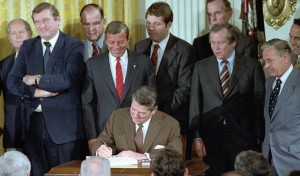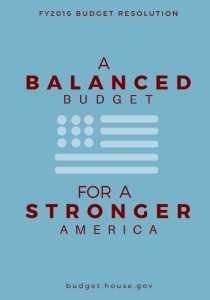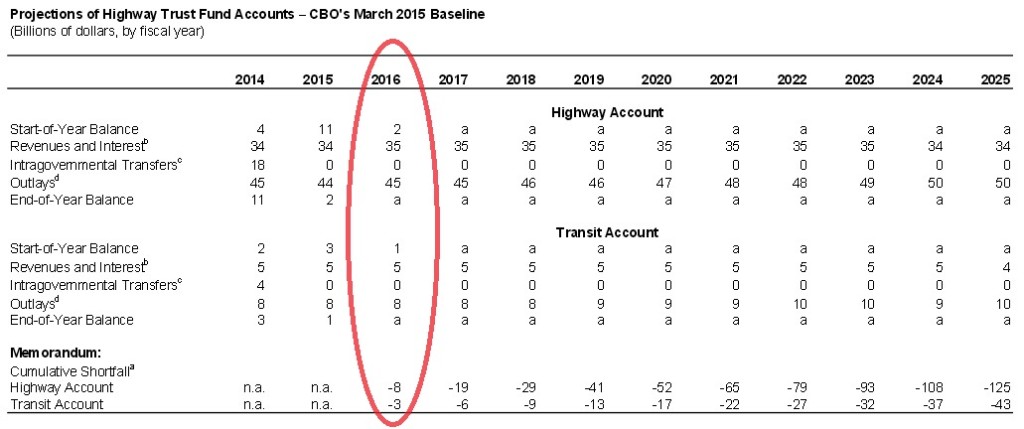Author Archive
Senate Committee Passes Surface Transportation Bill
June 24th, 2015 | By: America's Infrastructure Report Card
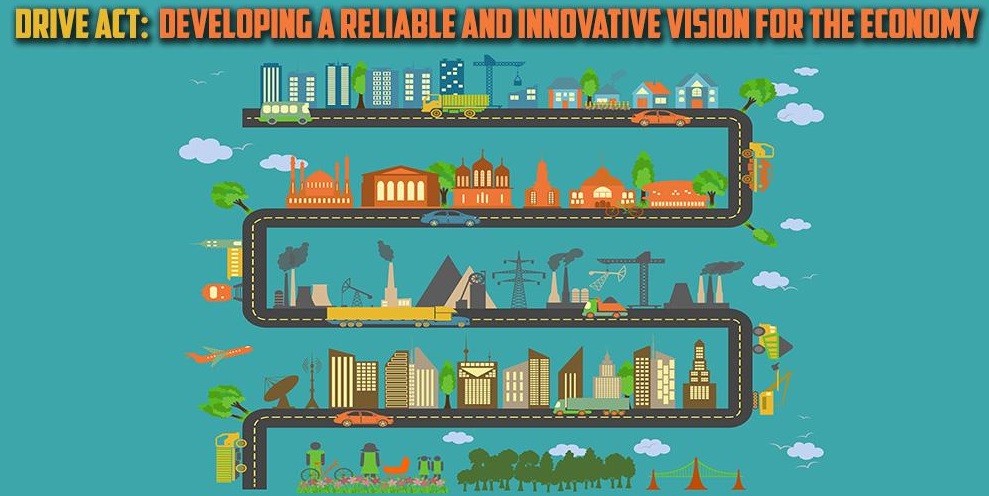 Today, the U.S. Senate Environment and Public Works Committee (EPW) unanimously approved a six-year, $278 billion federal highway portion of the surface transportation authorization bill, the Developing a Reliable and Innovative Vision for the Economy (DRIVE) Act. The DRIVE Act was unveiled earlier this week by EPW Committee leaders Chairman James Inhofe (R-OK), Ranking Member Barbara Boxer (D-CA), Subcommittee Chairman David Vitter (R-LA) and committee member Senator Thomas Carper (D-DE).
The bill would increase funding levels for highway programs by approximately $2.5 billion per year. The responsibility to identify how to pay for that increase, along with the annual Highway Trust Fund shortfall of $15 billion, belongs to the Senate Finance Committee. Tomorrow the Finance Committee will hold a hearing on transportation financing, where in testimony to the Committee ASCE underscored the importance of public support for funding as necessary to improving future financing opportunities. While Finance is still determining how they would like to pay for the DRIVE Act, in a recent interview with ASCE, Chairman Inhofe noted that he believes that General Fund revenues plus dollars from any corporate repatriation tax changes could address the funding gap. In addition to Finance, there are a few other Senate committees that need to act before the July 31 deadline to approve their transportation policy pieces, like transit and driver safety items.
ASCE sent a support letter to Senate leaders in favor of the DRIVE Act and President Bob Stevens issued a statement where he said, “The DRIVE Act achieves many of the goals that we as civil engineers believe must be addressed in the next surface transportation reauthorization and accomplishes these goals in a bipartisan fashion.” Some of the policy items contained in the DRIVE Act that ASCE supports include:
Today, the U.S. Senate Environment and Public Works Committee (EPW) unanimously approved a six-year, $278 billion federal highway portion of the surface transportation authorization bill, the Developing a Reliable and Innovative Vision for the Economy (DRIVE) Act. The DRIVE Act was unveiled earlier this week by EPW Committee leaders Chairman James Inhofe (R-OK), Ranking Member Barbara Boxer (D-CA), Subcommittee Chairman David Vitter (R-LA) and committee member Senator Thomas Carper (D-DE).
The bill would increase funding levels for highway programs by approximately $2.5 billion per year. The responsibility to identify how to pay for that increase, along with the annual Highway Trust Fund shortfall of $15 billion, belongs to the Senate Finance Committee. Tomorrow the Finance Committee will hold a hearing on transportation financing, where in testimony to the Committee ASCE underscored the importance of public support for funding as necessary to improving future financing opportunities. While Finance is still determining how they would like to pay for the DRIVE Act, in a recent interview with ASCE, Chairman Inhofe noted that he believes that General Fund revenues plus dollars from any corporate repatriation tax changes could address the funding gap. In addition to Finance, there are a few other Senate committees that need to act before the July 31 deadline to approve their transportation policy pieces, like transit and driver safety items.
ASCE sent a support letter to Senate leaders in favor of the DRIVE Act and President Bob Stevens issued a statement where he said, “The DRIVE Act achieves many of the goals that we as civil engineers believe must be addressed in the next surface transportation reauthorization and accomplishes these goals in a bipartisan fashion.” Some of the policy items contained in the DRIVE Act that ASCE supports include:
- Increased program funding over a six-year period;
- Multi-year program certainty that will help states and localities better plan and deliver projects;
- Prioritizing funding for bridge maintenance and repair;
- A focus on Interstate Highway System maintenance;
- Establishment of a new freight program, funded at $2 billion annually, to improve goods movement;
- Establishment of a new competitive grant program for large highway projects;
- Increased accounting and reader-friendly reporting of how Highway Trust Fund dollars are spent;
- Accelerated project delivery reforms aimed to improve collaboration between agencies and create deadlines for agency action(s);
- An option for rural areas to bundle small projects such as bridges to increase efficiency;
- Encouragement of agencies on resilience planning and natural disaster risk reduction;
- Expanding tolling to be available for use on all new Interstate Highway System lane construction projects;
- Creating a new intelligent transportation systems grant to accelerate technology deployment; and
- Providing grants to states for continued and expanded pilot testing of future road user fee collection systems.
#FixTheTrustFund This Week: Keeping the U.S. from Driving into Potholes
June 22nd, 2015 | By: America's Infrastructure Report Card
The Highway Trust Fund (HTF) was set up in 1956 to fund the build and maintain a transportation network nationwide. Today, it is the national bank account for roads, bridges and transit that reimburses states for eligible projects. Inaction by Congress has put the Highway Trust Fund in jeopardy, and with a month left before the temporary funding fix runs out on July 31st, Congress is nowhere near to closing a deal to generate sustainable revenue for the nation’s highway, bridge, and transit systems – investments vital to the health of our recovering economy. #FixTheTrustFund is a call to action to solve this transportation problem today. This week Congress is slated to step up hearings on transportation. Here’s what we’ll be watching in national campaign to #FixTheTrustFund this week: June 23, 10 a.m.: Senate Transportation, Housing and Urban Development, and Related Agencies Appropriations Subcommittee markup of a fiscal 2016 transportation spending measure. (Listen live) June 24, 9:30 a.m.: Senate Environment and Public Works Committee to mark up the Developing a Reliable and Innovative Vision for the Economy, or DRIVE, Act. (Info) What to watch for: With the current strong bipartisan consensus, we expect the mark-up to go smoothly. That action will put pressure on the other authorizing committees and the Senate Finance Committee to secure their pieces of the bill before the July 31 legislative deadline. The Senate the Finance Committee will hold a hearing on private sector investment and public-private partnerships with the former Indiana governor Mitch Daniels and current Colorado DOT chief Shailen Bhatt. Ranking Member Ron Wyden (D-OR) is expected to highlight his new bipartisan bill that would expand tax-exempt private activity bonds and create a new federal infrastructure tax credit. June 24, 2 p.m.: House Ways and Means Subcommittee on Select Revenue Measures hearing on the “taxation of the repatriation of foreign earnings as a funding mechanism for a multiyear highway bill.” (Info) What to watch: Across the Capitol in the U.S. House of Representatives, the Ways and Means Subcommittee on Select Revenue Measures will hold a hearing on the prospect of taxing U.S. corporate foreign earnings – otherwise known as repatriation – for deposit in the HTF, which the Obama Administration supports. This funding fix does not have unanimous support on either the Republican or Democratic side of the aisle, so expect some internal party disagreements on this as a solution along with some opposition from large, multinational corporations who will be on the hook to pay the tax. June 24, 2 p.m.: House Transportation and Infrastructure Highways and Transit Subcommittee hearing on “Meeting the Transportation Needs of Rural America.” (Watch live) June 25, 10 a.m.: Senate Finance Committee hearing on exploring ways that private financing could back infrastructure projects. (Info) Help Us #FixTheTrustFund 1. Tell Congress that it’s time to fix the Highway Trust Fund and increase our investment into transportation before the July deadline. 2. If you’re in MD, OR, CO, TX or WI, attend a Town Hall Meeting this week and ask your Member of Congress about their ideas on how to fix the Highway Trust Fund.| 6/24/2015 | Rep. Harris (R-MD-1) | This meeting is conducted by telephone.For more information on this meeting, follow this link: vekeo.com/event/congressman-andy-harris-06242015/?awesm=vekeo.buzz_t1u/ | Starts at 6:45 pm |
| 6/27/2015 | Sen. Wyden (D-OR) | Hood River Valley Adult Center2010 Sterling Dr.Hood River, OR 97031 | Starts at 1:00 pm |
| 6/27/2015 | Rep. Perlmutter (D-CO-7) | Natural Grocers by Vitamin Cottage4900 Kipling St.Wheat Ridge, CO 80033 | Starts at 10:00 am |
| 6/27/2015 | Rep. Sessions (R-TX-32) | Richland CollegeGarland Campus675 West Walnut StreetGarland, TX 75040-5023This meeting requires an RSVP. Register online.For more information on this meeting, follow this link: sessions.house.gov/index.cfm/june-town-hall | Starts at 11:00 am |
| 06/28/2015 | Rep. Sensenbrenner (R-WI-5th ) | Brookfield Public Safety Building 2100 North Calhoun Road Brookfield, WI 53005For more information on this meeting, follow this link: sensenbrenner.house.gov/contact/ | Starts at 7:00 pm |
The Taxman Cometh
June 19th, 2015 | By: America's Infrastructure Report Card

Congressional Budget Office (CBO) projected balance of the federal Highway Trust Fund (HTF) as of March 2015, which indicates HTF insolvency by September 2015.
Win One (Gas Tax) for the Gipper
May 27th, 2015 | By: America's Infrastructure Report Card
Summer reading lists of those in Washington, D.C. policy circles tend not to reflect titles that rank highly on the New York Times bestseller list. Case and point is a new work by Eno Center for Transportation senior fellow Jeff Davis, titled “Reagan Devolution: The Real Story of the 1982 Gas Tax Increase.” In the piece, Davis provides an excerpt from Reagan’s Saturday, Nov. 27, 1982 radio address where the president stated, “What we’re proposing is to add the equivalent of five cents per gallon to the existing federal highway user fee, the gas tax. That hasn’t been increased for the last 23 years. The cost to the average motorist will be small, but the benefit to our transportation system will be immense.” Reagan signed the gas tax bill on January 6, 1983. Much of that lore is known and has been repeated in recent years by ASCE and others as a symbol of leadership that existed during a time of heightened bipartisan understanding. However, Davis paints a more nuanced view, supported by primary documentation from President Reagan’s Simi Valley library and conversations with former Reagan staffers. The truth is that when it came to transportation, Reagan was both a pragmatic bipartisan deal cutter and limited government ideologue at the same time and certain policies, such as the enactment of the 1982 gas tax hike, bring this to light. The rubber met the road so to speak when following his 1982 State of the Union address where Reagan announced grand plans to block-grant a large portion of the federal budget including transportation programs to the states, Davis outlines that, “Negotiations with state governors and city and county officials over the specifics went poorly,” and Reagan was forced to abandon those efforts. Echos of the debate between raising the gas tax and devolving the federal program to the states ring as current today as they did in 1982. While the faces have changed and the party positions might be a bit altered, the national challenge that faced President Reagan and Congressional Democrats remains the same: How can the nation improve its transportation system and raise revenue for this cause in a way that can generate bipartisan support from federal, state and local lawmakers.? With the looming deadline of July 31 hanging over the fate of the current federal transportation program, let’s hope that today’s decision makers dive into this summer read and get to work on a solution quickly to #FixtheTrustFund.Tags: economics, failure to act, infrastructure, infrastructure report card, transportation
No Comments »
Congress Punts on Highway & Transit Improvements
May 21st, 2015 | By: America's Infrastructure Report Card
To use a common football analogy, this week Congress decided to “punt” on finding a long-term highway and transit funding solution and reauthorizing federal surface transportation programs. In football, the purpose of punting is for a team to be in a better strategic position following a failed offensive effort. Congress might need to be reminded of this because their action this week did nothing to get them closer to identifying a long-term solution to increase transportation investment. Their failure to deliver on this important objective harms the nation and will lead to more potholes, overcrowded transit cars, and more deficient bridges. The U.S. House of Representatives has already approved a measure to extend the current highway and transit program until July 31, 2015, and the U.S. Senate will soon follow suit. This sets-up a similar dynamic as we saw last summer, where the federal Highway Trust Fund will approach bankruptcy at the same time that programs to build roads, repair bridges and improve transit systems will expire. This means that at the U.S. Department of Transportation (USDOT) contingency planning will begin on how to soon slow down payments to states for project work completed and, if Congress fails to do anything by the end of July, plans will be in place for the possibility of an August highway and transit department shutdown. More importantly, the extension means that states and localities will pull back even further in their planning and delivery of projects amidst this summer uncertainty. This represents the state of affairs when Congress shirks its responsibility to provide states budget certainty and adequate funding to meet the mobility needs of their residents and local businesses. Over the next 11 weeks, ASCE will be urging Congress to find a real and lasting solution that will allow America to modernize our roads, bridges, and transit systems. We can’t do this alone; we need your help and voice in this policy debate to ensure that members of Congress feel the pressure on the need to act. Please take a moment and write you members of Congress and tell them that they need to fix the Highway Trust Fund and act to improve the nation’s transportation system. It’s fourth and inches and time for Congress to run a play that gets this issue across the goal line.Tags: congress, highway trust fund, infrastructure, transportation
Comments Closed
It's Time Again to GROW America
April 1st, 2015 | By: America's Infrastructure Report Card
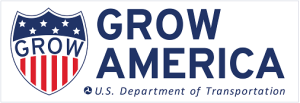 During a recent interview with Politico’s Mike Allen, U.S. Secretary of Transportation Anthony Foxx noted that the nation’s transportation system is “in a huge ditch.” Yesterday, the U.S. Department of Transportation (USDOT) unveiled its idea on how to get America out of that ditch with their GROW America proposal. If the name sounds familiar, it’s because that was the original title of the previous federal surface transportation program proposal unveiled by the Obama Administration last year. The key difference this year is that the Administration has identified a specific funding source, taxing overseas corporate profits, to pay for the $478 billion, six-year bill.
The GROW America proposal, among other things, would:
• Increase the nation’s overall investment in transportation by 45%, with a 29% increase in highway spending and a 76% increase in transit spending;
• Provide $18 billion for a multi-modal freight program that strengthens America’s exports and trade;
• Include $28.6 billion for passenger rail programs;
• Double funding for the TIGER competitive discretionary grant program and create a new $6 billion highway and transit competitive grant program; and
• Double the Transportation Infrastructure Finance and Innovation Act (TIFIA) program which encourages utilization of innovative financing mechanisms.
USDOT published a state-by-state impact of the benefits of GROW America investment which included ASCE Report Card data on state needs and economic impacts. The GROW America Act is an important legislative marker that seeks to define the debate about the need to increase federal infrastructure investment in order to meet current and future capacity and maintenance challenges. Funding certainty is important to states for delivering projects, as the six-year time frame supports, but of additional importance is the need to increase overall federal funding. The current revenue rates have not risen since 1993 and since that time the cost to deliver projects has increased. Since 1993, in real terms, the average federal highway dollar has lost over a third of its purchasing power. Please urge your members of Congress to act now to grow the federal surface transportation program and fix the Highway Trust Fund.
During a recent interview with Politico’s Mike Allen, U.S. Secretary of Transportation Anthony Foxx noted that the nation’s transportation system is “in a huge ditch.” Yesterday, the U.S. Department of Transportation (USDOT) unveiled its idea on how to get America out of that ditch with their GROW America proposal. If the name sounds familiar, it’s because that was the original title of the previous federal surface transportation program proposal unveiled by the Obama Administration last year. The key difference this year is that the Administration has identified a specific funding source, taxing overseas corporate profits, to pay for the $478 billion, six-year bill.
The GROW America proposal, among other things, would:
• Increase the nation’s overall investment in transportation by 45%, with a 29% increase in highway spending and a 76% increase in transit spending;
• Provide $18 billion for a multi-modal freight program that strengthens America’s exports and trade;
• Include $28.6 billion for passenger rail programs;
• Double funding for the TIGER competitive discretionary grant program and create a new $6 billion highway and transit competitive grant program; and
• Double the Transportation Infrastructure Finance and Innovation Act (TIFIA) program which encourages utilization of innovative financing mechanisms.
USDOT published a state-by-state impact of the benefits of GROW America investment which included ASCE Report Card data on state needs and economic impacts. The GROW America Act is an important legislative marker that seeks to define the debate about the need to increase federal infrastructure investment in order to meet current and future capacity and maintenance challenges. Funding certainty is important to states for delivering projects, as the six-year time frame supports, but of additional importance is the need to increase overall federal funding. The current revenue rates have not risen since 1993 and since that time the cost to deliver projects has increased. Since 1993, in real terms, the average federal highway dollar has lost over a third of its purchasing power. Please urge your members of Congress to act now to grow the federal surface transportation program and fix the Highway Trust Fund.
Tags: congress, highway trust fund, infrastructure, report card, transportation
No Comments »
Budgets Represent Priorities
March 19th, 2015 | By: America's Infrastructure Report Card
This week the U.S. House of Representatives and the U.S. Senate majorities unveiled their fiscal year 2016 (FY16) budgets. Traditionally, passing a budget in Congress is a particularly partisan endeavor with most all members in the majority voting in favor of their budget, and all the minority members voting against it. Should this Congress pass a budget in the coming weeks, it will not have to go to President Obama for his signature as budgets are self-imposed restrictions on Congressional spending. However, occasionally Congress has increased funding levels for certain programs despite the budget instructing them not to do so. These proposals offer some insight into what transportation funding levels might look like in the coming year. Disappointing for transportation was that both the House and Senate budgets assumed that road, bridge and transit spending would be limited to incoming revenues to the federal Highway Trust Fund (HTF). This is a problem as the HTF has been facing fiscal pressure over the years and is forecast to require $13 billion in additional revenues in FY16 just to maintain current spending levels. Which is why ASCE supported a House Budget Committee amendment by Congresswoman Kathy Castor (D-FL) that would have maintained current spending levels for surface transportation. Unfortunately, the amendment failed in committee by a vote of 14-22. Better for transportation in the House and Senate budgets is the creation of what is known as a “reserve fund” for the HTF, which would allow the tax committees to determine how best to fill the trust fund hole in a way that is deficit-neutral. These ways could include raising taxes (including the federal gasoline tax), cutting spending, or transferring other government funds to transportation. ASCE called for and supported the creation of this HTF reserve fund, however in order to increase spending for other infrastructure sectors, like water, dams and levees, a broader Infrastructure Reserve Fund is also needed. Senate Budget Committee Ranking Member Bernie Sanders (I-VT) introduced such an amendment in committee, which ASCE supported, but unfortunately that too was defeated on a party-line vote. Earlier this year, ASCE endorsed legislation introduced by Senator Sanders that would increase funding for our nation’s transportation, water and other infrastructure sectors. The Senator is expected to offer other infrastructure-related amendments on the Senate floor when the budget is up for a vote there next week. The debate over the last few days on the budget has crystallized one key fact on transportation spending: the vast majority in Congress believe that we should be investing more in transportation but there is not yet widespread bipartisan consensus on exactly how to pay for it. ASCE needs your help to tell Congress to work quickly to identify a long-term, sustainable funding solution that would #FixTheTrustFund before the legislative deadline of May 31, 2015.Tags: congress, highway trust fund, infrastructure, transportation, water infrastructure
No Comments »
Action to Fix Highway Trust Fund Needed by This Summer
March 9th, 2015 | By: America's Infrastructure Report Card
Tags: bridges, highway trust fund, infrastructure, roads, transit, transportation
No Comments »
Obama Budget Goes Big on Infrastructure
February 2nd, 2015 | By: America's Infrastructure Report Card

Photo of the cover of President Obama’s FY16 Budget; photo credit: Twitter image via Jonathan Weisman, The New York Times economic policy reporter
Tags: energy, highway trust fund, infrastructure, transportation, water
1 Comment »
The Power of a Coalition
January 26th, 2015 | By: America's Infrastructure Report Card
The following is a guest post by Kevin M. Burke, President and CEO of Airports Council International-North America. Prior to joining Airports Council International-North America (ACI-NA) as its president and CEO in January 2014, I spent 13 years at the helm of the American Apparel & Footwear Association. In my role at AAFA, I traveled frequently, visiting manufacturers across the world. One thing that always struck me was that in many developing countries, their airports were exceptional facilities. The U.S. is home to far and away the world’s safest commercial aviation system, of which our airports play a fundamental part. But making sure that our airports continue to connect passengers and cargo shippers safely, securely, and efficiently to opportunities throughout the world requires fresh thinking in how we invest in upgrading and modernizing aging facilities. Here in the U.S., we have a spate of infrastructure and capital improvement projects ready to tackle at airports of all sizes—from our smallest regional airports to our largest international hubs. All told, there are more than $71 billion in projects necessary in the next few years just for us to keep pace with increasing capacity demands and the intended lifespan of current facilities. As other modes of transportation are well aware, though, it’s one thing to identify that we need to make investments in infrastructure, and another challenge entirely to agree on how to fund these projects. That’s where the power of a coalition emerges. For airports, our fiscal course is set by FAA Reauthorization, which is reviewed by Congress every five years. With 2015 being such a year, our efforts actually began in earnest in the summer of 2014, with the launch of AirportsUnited and the bringing together of not just our traditional airport partners, but also allies across a broad spectrum of interests and industries. To date, the AirportsUnited Beyond the Runway coalition—of which we’re proud to call ASCE a member—is more than 20 strong, ranging from travel and tourism to construction and engineering. By joining together under the same banner, we share a dynamic, unified voice on behalf of U.S. airports and the tremendous economic contribution they make. We’ve got our work cut out for us over these next several months, but as our coalition can readily attest, a global leader deserves world-leading infrastructure, and U.S. airports are no exception.Tags: aviation
No Comments »



 */ ?>
*/ ?>




